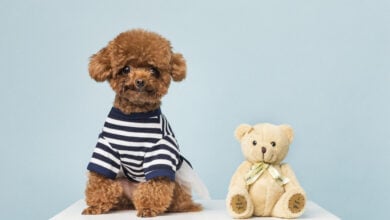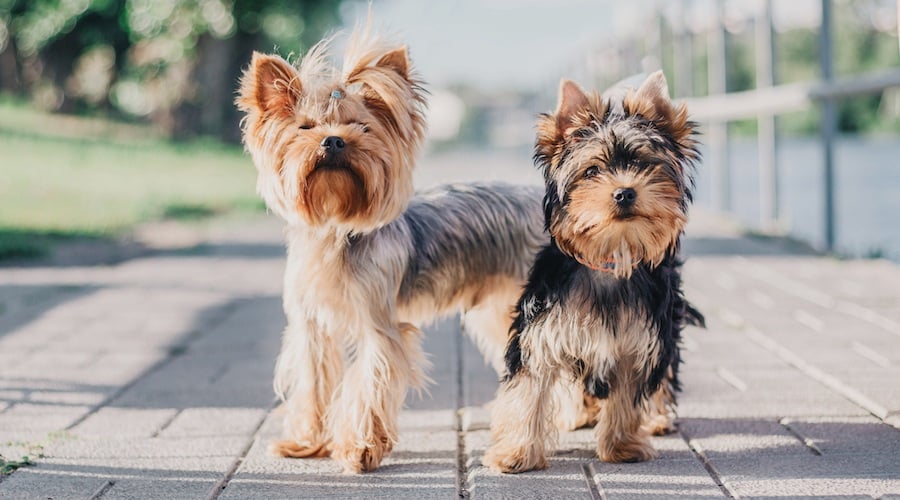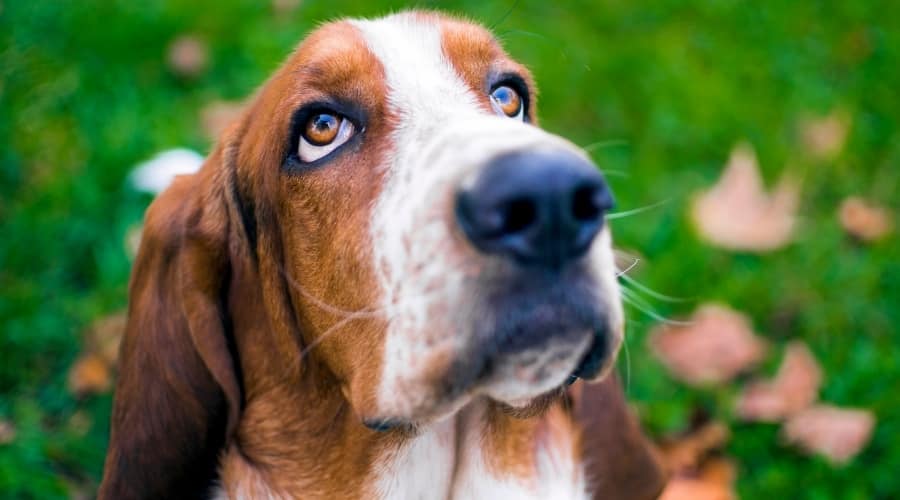13 Best Dogs For First-Time Owners: Choosing The Right Breed For You
When you purchase through links on our site, we may earn a commission. Here’s how it works.
So you’ve decided to get a dog. Congratulations—and welcome to the wonderful world of fur-covered furniture, early morning potty runs, and sudden Google searches like “Why is my dog eating drywall?”
Table of Contents
If you’re new to this whole dog ownership thing, don’t worry. Some breeds are practically made for beginners. They’re easygoing, eager to please, and less likely to treat your shoe collection as a snack buffet.
Below are 13 dog breeds that won’t make you question your life choices (because not everyone can handle a Husky on day one). Start here. Thank us later.
13 Best Dogs For First-Time Owners
If you’re looking for the best dogs for first-time owners, you’re in the right place.
These breeds are known for their chill personalities, trainability, and overall beginner-friendliness. Whether you’re craving a cuddly lapdog or a playful walking buddy, there’s something here for every new dog parent.
1. Golden Retriever
Think Dug from “Up”—loyal, goofy, obsessed with people, and always ready to chase a squirrel. Golden Retrievers are the gold standard of good dogs, and they’re practically built for beginner pet parents.
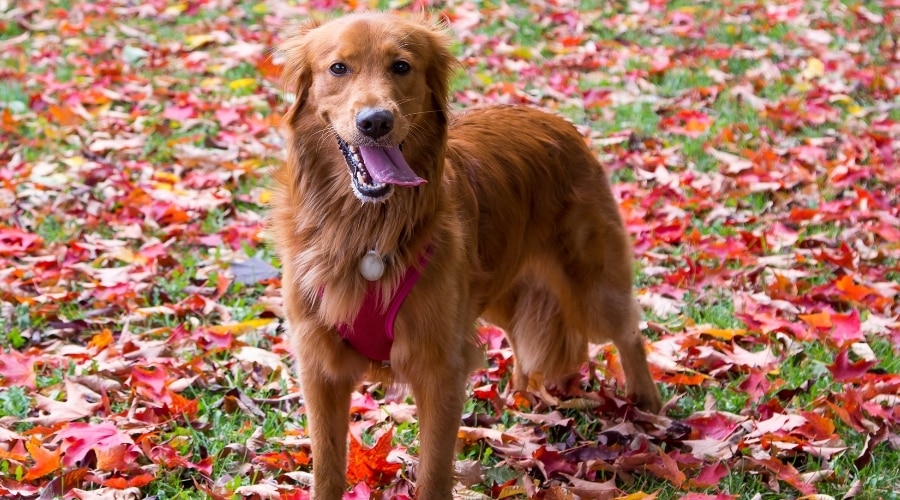
Why it’s beginner-friendly: Friendly, loyal, and absurdly easy to love, Goldens are the ultimate starter dog.
- Vibe check: Affectionate, people-loving, and great with kids, cats, and visitors. Their social nature makes them one of the most trusted family companions around.
- Energy level: 55 to 75 pounds of energy and sunshine. They need around two hours of exercise daily, so be ready to walk, jog, or play fetch on repeat.
- Training tips: Goldens are intelligent and cooperative, making training feel easy. Their love of treats helps, too.
- Grooming & care: That golden coat is stunning but sheds year-round. Daily brushing helps keep fur tumbleweeds under control.
- Watch-outs: They’re not a great fit for small apartments or couch-potato lifestyles. Hip dysplasia and eye issues are common, so health screenings are essential.
2. Cavalier King Charles Spaniel
The comfort dog you didn’t know you needed. Cavaliers are small but overflowing with love, charm, and lap loyalty. This breed delivers if you’re looking for a gentle companion that fits into almost any household.
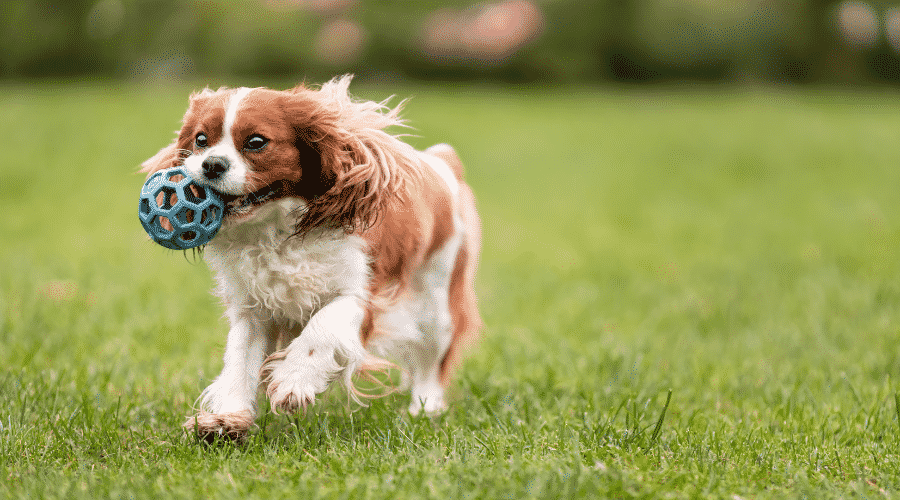
Why it’s beginner-friendly: Calm, affectionate, and always down for a cuddle, Cavaliers are one of the easiest breeds to live with.
- Personality & quirks: Sweet, loyal, and easygoing. They get along well with kids, other pets, and even that grumpy neighbor who says they don’t like dogs.
- Size & space needs: 13 to 18 pounds. Ideal for apartment dwellers or anyone with a soft spot for lap dogs.
- Training tips: They’re eager to please and pick up on routines quickly. A great choice for new owners nervous about training.
- Health notes: Prone to heart disease and joint issues. Choose a breeder who screens for common problems, and commit to regular checkups.
3. Bichon Frise
A tiny cloud with main character energy. This little dog is cheerful, dramatic, and always ready to be adored by a rotating cast of admirers.
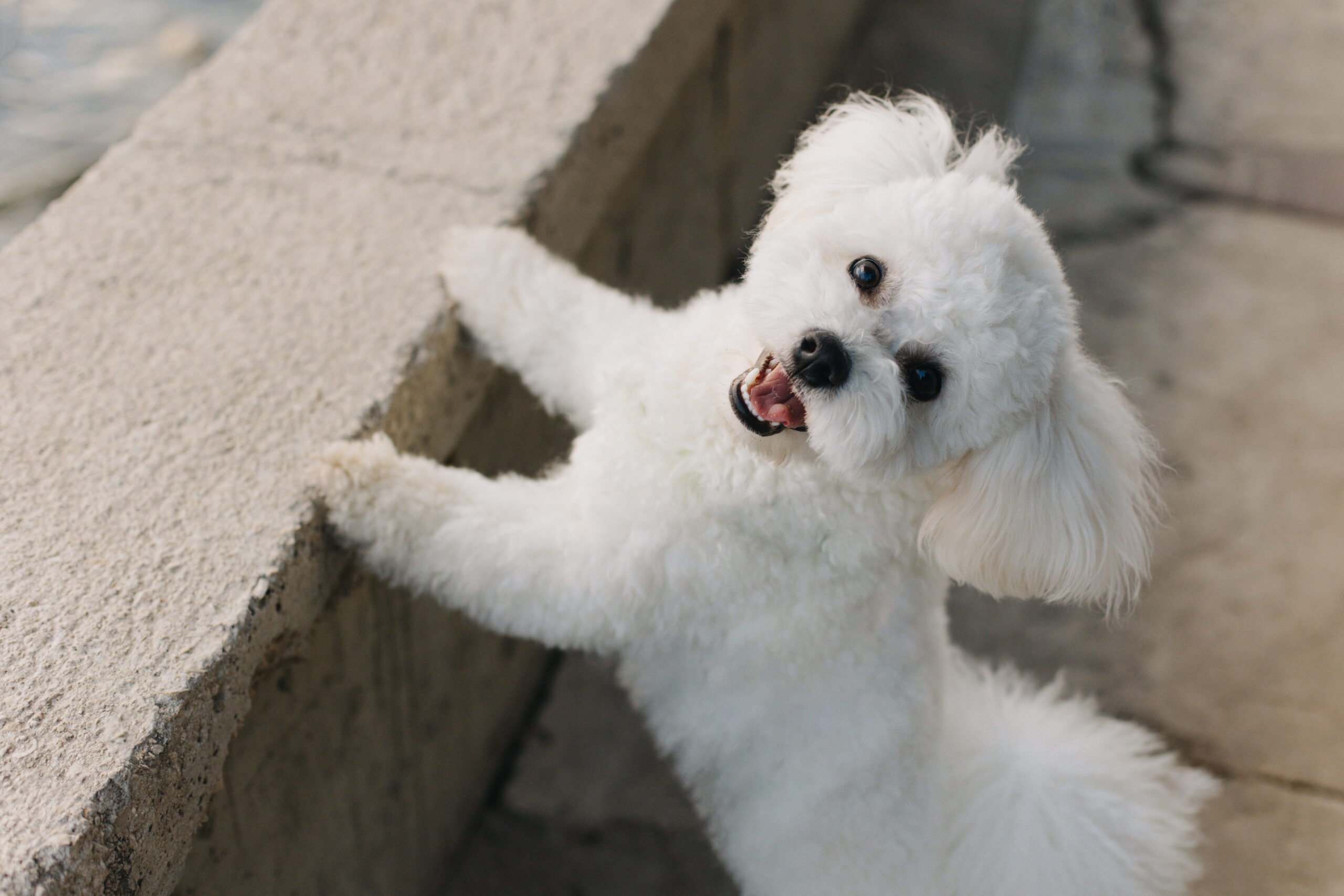
Why it’s beginner-friendly: Small, sociable, and easy to train, the Bichon is an excellent pick for someone wanting a low-intimidation intro to dog life.
- Vibe check: Playful and affectionate, but clingy if ignored. These dogs want to be where the people are — ideally, in someone’s arms.
- Size & setup: 7 to 12 pounds. Apartment-approved and great for city living, as long as they get their daily playtime.
- Training tips: Smart and trainable, but they’ll push boundaries if they think they’re the boss. Keep it fun but consistent.
- Grooming & care: They don’t shed much, but their fluffy coat needs regular grooming. Sensitive to heat, so indoor naps are preferred.
- Watch-outs: Separation anxiety is common. A Bichon left alone too long may sing you the song of its people—loudly.
4. Cockapoo
Cockapoos are the lovable mutts of the designer dog world—a mix between a Poodle and a Cocker Spaniel, wrapped in fluff and friendliness. They’re energetic without being overwhelming and cuddly without being clingy.

Why it’s beginner-friendly: Cockapoos are easygoing, affectionate, and eager to please—an excellent combo for nervous new owners.
- Personality & lifestyle fit: Charming, people-focused, and great with kids. They make friends fast and love being part of the family routine.
- Size & space needs: 10 to 50 pounds, depending on parentage. Smaller ones do great in apartments, while larger ones need more room to roam.
- Training tips: Quick learners with just enough Cocker Spaniel sass to keep you on your toes. Early training helps manage separation anxiety.
- Grooming & care: Coat texture varies, but most need regular brushing and occasional trims. Light shedding makes cleanup easier than with some other breeds.
- Watch-outs: They don’t like being alone for long stretches. If your schedule means lots of time away, this might not be the breed for you.
5. Labrador Retriever
Labs are the enthusiastic overachievers of the dog world: athletic, affectionate, and always ready to be your copilot. They’re the kind of dog who’s just as excited about a hike as they are about chasing ice cubes around the kitchen.
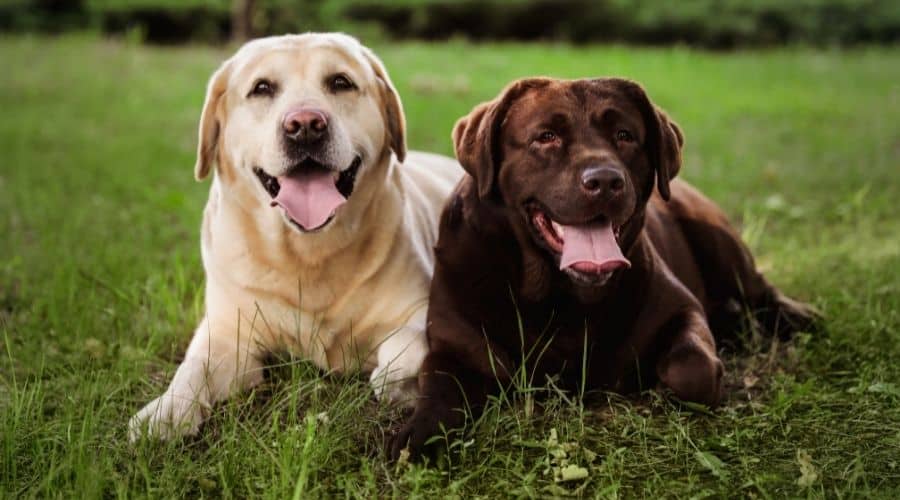
Why it’s beginner-friendly: Labradors are famously trainable, good-natured, and adaptable. They’re a safe bet for new owners who want a sturdy, reliable companion.
- Vibe check: Sociable, goofy, and food-motivated. Great with kids, other dogs, and guests who smell like snacks.
- Energy level: 55 to 80 pounds and full of stamina. They thrive with active owners who can commit to daily walks, playtime, or even a game of fetch in the yard.
- Training & enrichment: They catch on fast but need regular mental stimulation to stay out of trouble. Labs will find a job if you don’t give them one.
- Grooming & care: Short, water-resistant coat. Sheds, but brushing a few times a week keeps it manageable.
- Watch-outs: Labs are prone to weight gain and joint issues, especially if overfed or under-exercised. Stick to a routine, and don’t skip walks.
6. Bernedoodle
Imagine if a teddy bear came to life, wagged its tail, and insisted on being part of every family activity. That’s a Bernedoodle. This mix of Bernese Mountain Dog and Poodle is big, lovable, and surprisingly beginner-friendly.
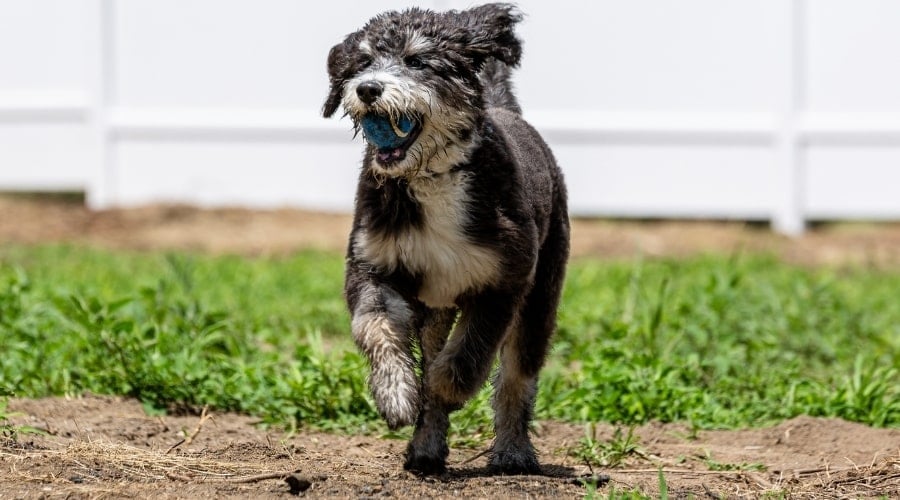
Why it’s beginner-friendly: Affectionate, friendly, and typically low-shedding, Bernedoodles are gentle giants with a playful streak that makes them easy to love.
- Personality & lifestyle fit: Social and easygoing. They adore people and want to be involved in everything, from hikes to movie nights. Great with kids, pets, and guests.
- Size & space needs: 60 to 90 pounds, depending on the Poodle parent. These pups need room to stretch out, so a house with a yard is ideal.
- Training & energy: Smart and responsive to training, but they need daily exercise and mental engagement or they’ll get bored. Think long walks, puzzle toys, and yard zoomies.
- Grooming & care: Coats range from wavy to curly. Most require regular brushing and occasional grooming to prevent mats.
- Watch-outs: Prone to separation anxiety and not ideal for homes where everyone’s gone all day. Also a pricey breed, so budget accordingly.
7. Goldendoodle
If you blended a Golden Retriever’s charm with a Poodle’s brains and gave it a stuffed-animal face, you’d get the Goldendoodle. These happy-go-lucky dogs are one of the most popular designer breeds around, and for good reason.

Why it’s beginner-friendly: Goldendoodles are friendly, adaptable, and intelligent—a great fit for anyone new to dog parenting.
- Vibe check: Bubbly and affectionate, they thrive on human interaction. Often called “Velcro dogs” because they stick close to their people.
- Size & energy needs: Standard Goldendoodles weigh 50 to 70 pounds, while minis range from 20 to 40. They need daily exercise, but not in excessive amounts.
- Training tips: Eager to learn and please. Socialize and train early to keep their enthusiasm from turning into chaos.
- Grooming & care: Coat types vary, but most need regular brushing and grooming. Less shedding than a Golden, but not always fully hypoallergenic.
- Watch-outs: Not the best match for people gone all day—they’ll miss you, loudly. Also prone to ear infections, so keep those floppy ears clean.
8. Shih Tzu
This pint-sized royal has gone from palace floors in ancient China to modern sofas everywhere. Shih Tzus are affectionate little companions who love to be pampered but are tougher than they look.
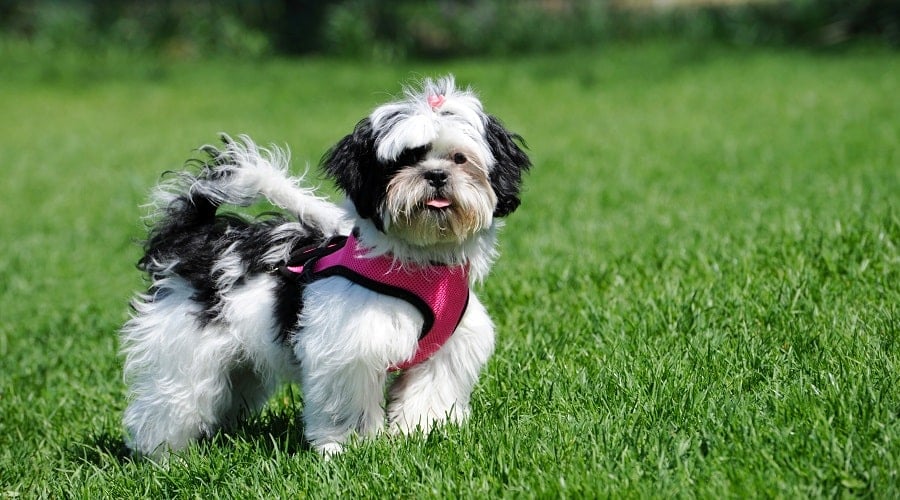
Why it’s beginner-friendly: Small, loving, and content with short walks and long naps, Shih Tzus are perfect for laid-back first-time owners.
- Personality & quirks: Friendly and playful but not overly demanding. They bond closely with their people and enjoy quiet company over wild chaos.
- Size & setup: 9 to 16 pounds and great for apartments. They don’t need a big yard, just a cozy spot near their humans.
- Training tips: Smart but a bit stubborn. Positive reinforcement and patience go a long way.
- Grooming & care: That flowing coat requires regular maintenance unless trimmed short. Daily walks and short play sessions keep them happy and healthy.
- Watch-outs: Prone to overheating and breathing issues in hot weather. Keep them indoors in extreme temps and schedule grooming regularly.
9. Poodle
Poodles are often mistaken for fancy show dogs, but underneath all that fluff is a brainy, athletic, and affectionate companion. They’re one of the most intelligent dog breeds and are up for just about anything.

Why it’s beginner-friendly: Trainable, social, and hypoallergenic, Poodles are versatile dogs that adapt easily to first-time owners with active lifestyles.
- Personality & quirks: Alert, lively, and eager to please. They love mental challenges and tend to excel at games, tricks, and agility.
- Size & energy needs: Available in toy, miniature, and standard sizes (5 to 55+ pounds). All Poodles need regular exercise—about 90 minutes daily—regardless of size.
- Training tips: They’re quick learners and enjoy problem-solving. Just keep things interesting and avoid repetition.
- Grooming & care: Low shedding but high maintenance when it comes to grooming. Regular trims and brushing are essential.
- Watch-outs: Poodles are sensitive and crave companionship. Left alone too long, they may get anxious or destructive.
10. Papillon
With ears like butterfly wings and energy to match, Papillons are bold little extroverts in a toy-sized package. Don’t let the dainty looks fool you—they’re smart, athletic, and full of personality.
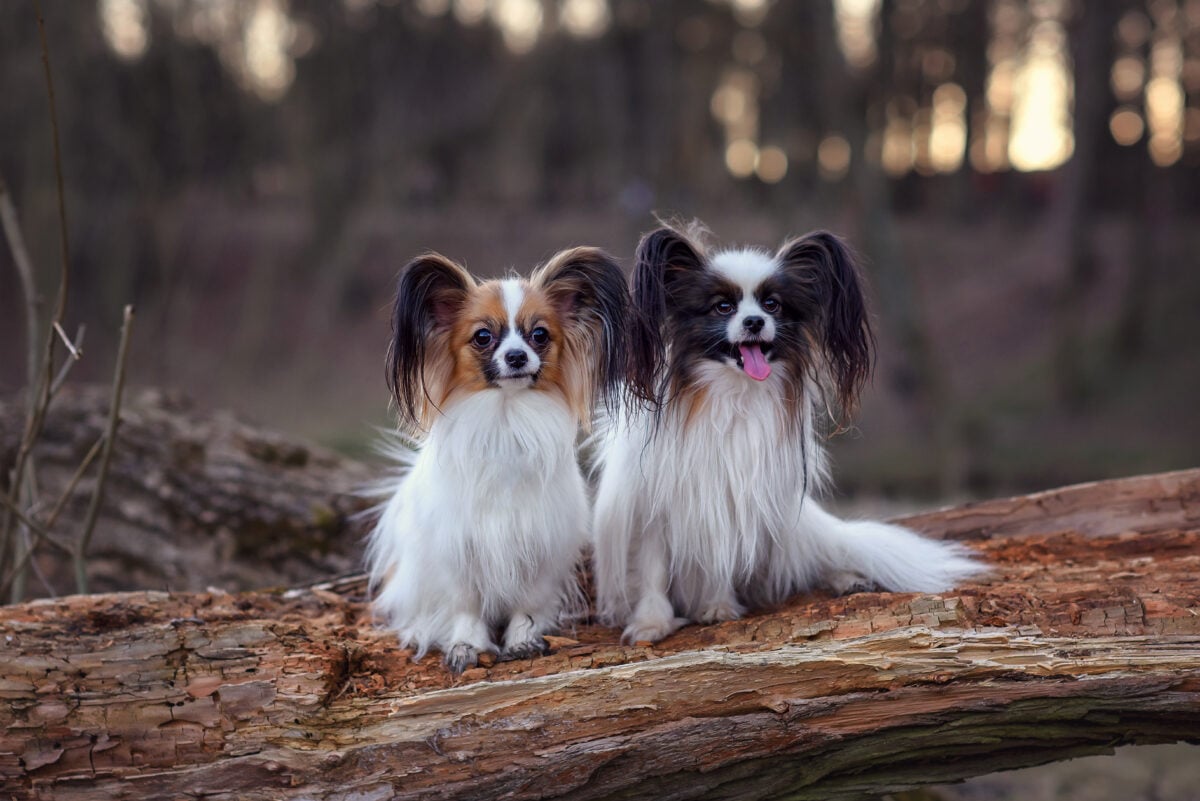
Why it’s beginner-friendly: Tiny, trainable, and friendly, Papillons are great for owners looking for a small dog with a big heart and a social streak.
- Lifestyle fit: They thrive in active households, even with limited space. Good with respectful kids and happy to meet new people.
- Size & activity level: 5 to 10 pounds, but full of bounce. A few short walks and indoor play sessions keep them entertained.
- Training tips: Bright and fast to learn, especially with reward-based training. They love to show off new tricks.
- Grooming & care: Their silky coat needs occasional brushing. Two ear types exist: the upright Papillon and the droop-eared Phalene.
- Watch-outs: Not a fan of being alone all day. These dogs want company and stimulation.
11. Yorkshire Terrier
Small but mighty, Yorkies are known for their confidence, sass, and long, silky hair. They’re affectionate and loyal but come with a dose of attitude—in the best way.
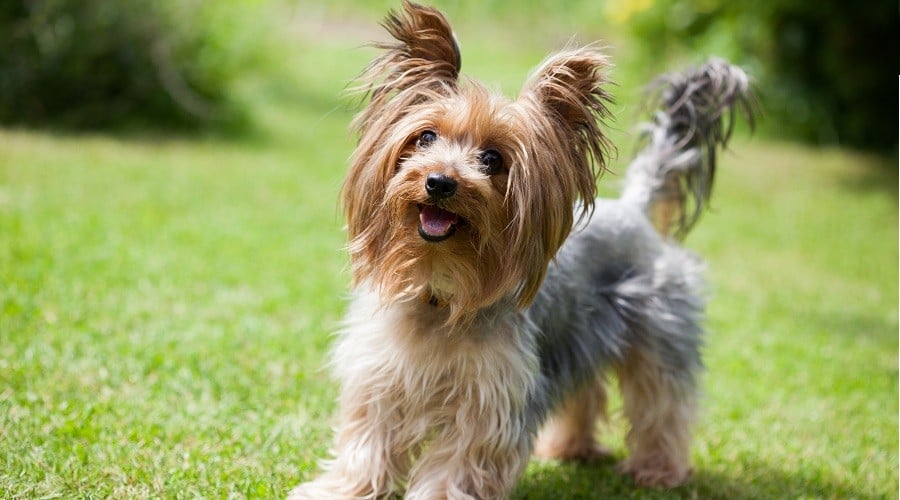
Why it’s beginner-friendly: Yorkies are tiny, adaptable, and smart, making them great for city dwellers or anyone who wants a bold but compact companion.
- Vibe check: Feisty and full of charm. They bond closely with their humans and may play watchdog despite their size.
- Size & setup: 4 to 7 pounds. Apartment living approved, as long as they get a daily walk and some playtime.
- Training tips: Intelligent but independent. Early socialization and positive training help curb bossy tendencies.
- Grooming & care: High-maintenance hair unless kept in a short cut. Regular brushing or professional grooming is a must.
- Watch-outs: Prone to barking and can be territorial without training. Supervision needed with small kids due to their tiny size.
12. Greyhound
Built like a Ferrari, but happy living life like a retired librarian. Greyhounds are fast when they need to be but surprisingly low-key and gentle the rest of the time.
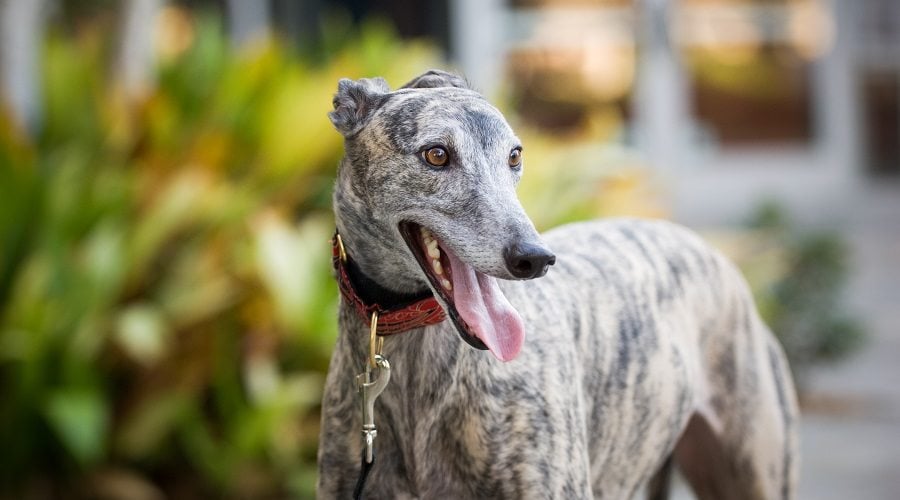
Why it’s beginner-friendly: Quiet, calm, and affectionate, Greyhounds are easy to manage and love lounging as much as running.
- Personality & temperament: Reserved initially but sweet and loyal once they bond. Often described as “cat-like” in their calm demeanor.
- Size & space needs: 50 to 85 pounds, but couch-friendly. They need a few short walks a day and a cozy place to stretch out.
- Training tips: Sensitive and responsive to gentle guidance. Harsh corrections don’t go over well.
- Grooming & care: Short coat, low shedding, and minimal grooming needs. Keep them warm in cold weather.
- Watch-outs: Must be kept on leash or in a fenced area due to a strong prey drive. Not ideal for homes with small pets unless well socialized.
13. Basenji
The barkless brainiac of the dog world. Basenjis are sleek, curious, and famously quiet, though they do let out the occasional yodel. Independent but loyal, they’re a one-of-a-kind companion for the right owner.
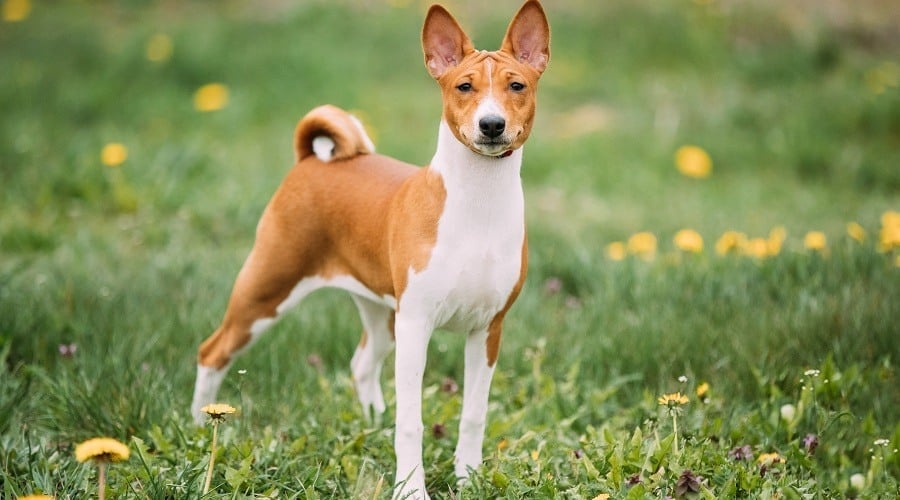
Why it’s beginner-friendly: Basenjis are clean, compact, and full of character. With early training, they make excellent pets for active first-time owners.
- Personality & quirks: A little cat-like in behavior. Curious, clever, and not overly clingy. They’re independent thinkers who need consistency.
- Energy level: 21 to 24 pounds and packed with energy. They need daily mental and physical stimulation, or they’ll invent their own entertainment.
- Training tips: Start early. They’re smart but stubborn and do best with firm, positive guidance and variety in training.
- Grooming & care: Low-shedding and nearly self-cleaning. They groom themselves like cats and don’t have that typical doggy odor.
- Watch-outs: Not great with small pets due to high prey drive. Fenced yards are a must; they’re quick and love to bolt.
Choosing The Right Dog For You
Not every “easy” breed is the right fit for every person. Some first-time owners want a jogging partner. Others want a lap warmer with low-shed fur.
Even within the same breed, dogs can vary in energy, temperament, and training needs. The key is to match the dog’s needs to your lifestyle, not the other way around.
- If you live in a small apartment, pick a breed that doesn’t need a backyard track meet.
- If you’re away most of the day, skip the breeds prone to separation anxiety.
- If you’ve never owned a pet, steer clear of dogs that demand nonstop stimulation, complex grooming, or the patience of a saint.
There’s no perfect dog, but there’s probably an ideal dog for you.
7 First-Time Dog Owner Tips
Getting a dog is exciting, but it comes with a learning curve. Before you bring home a furry best friend, you must know what you’re signing up for.
These tips will help you avoid common first-timer mistakes, set realistic expectations, and build a healthy relationship with your new pup.
1. Think About Your Daily Lifestyle
Dogs need structure, attention, and consistency. Certain breeds may not be the right fit if you’re gone most of the day, especially those prone to separation anxiety or boredom-based behavior. The best beginner breeds tend to be more adaptable and content with solo downtime.
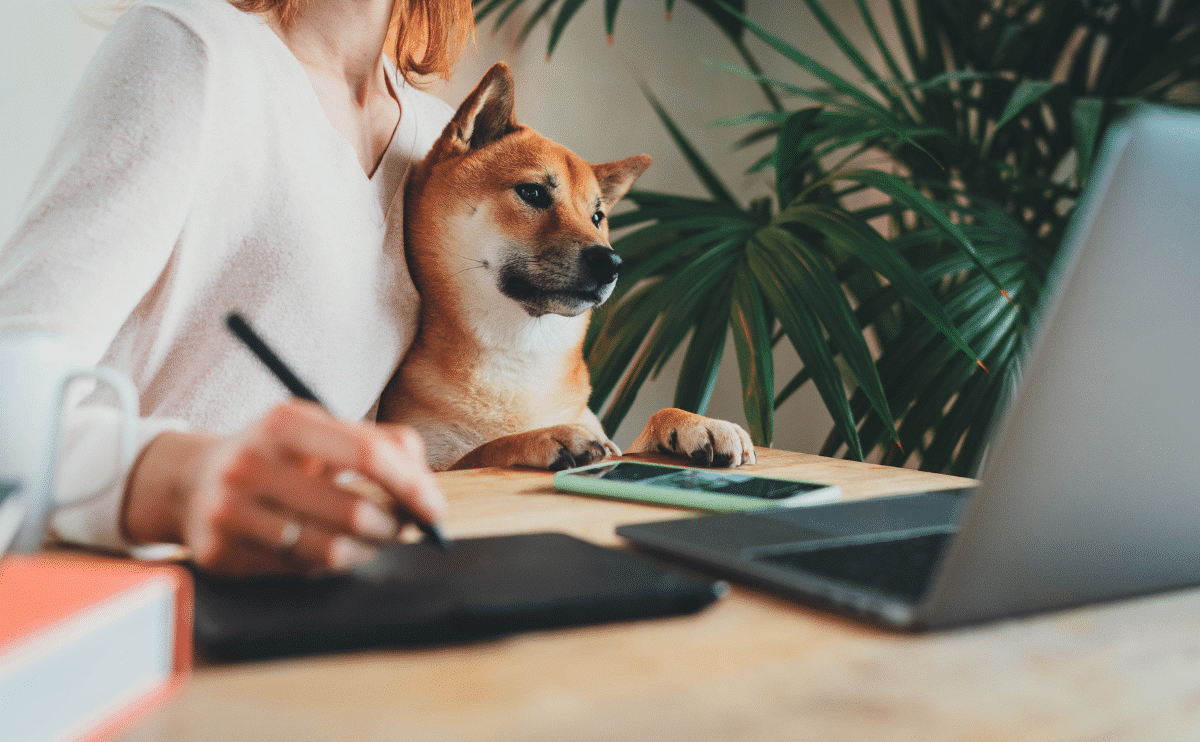
If you’re retired or work from home, you might have more flexibility to handle a puppy’s training schedule or a clingier companion. Your daily routine should shape your decision, not just what the dog looks like or how popular the breed is on Instagram.
2. Consider Your Household Dynamics
Do you have children? Other dogs? Cats?
It’s essential to choose a dog that plays well with others. Some breeds are famously tolerant and affectionate with kids, while others prefer a calmer environment or more mature handlers.
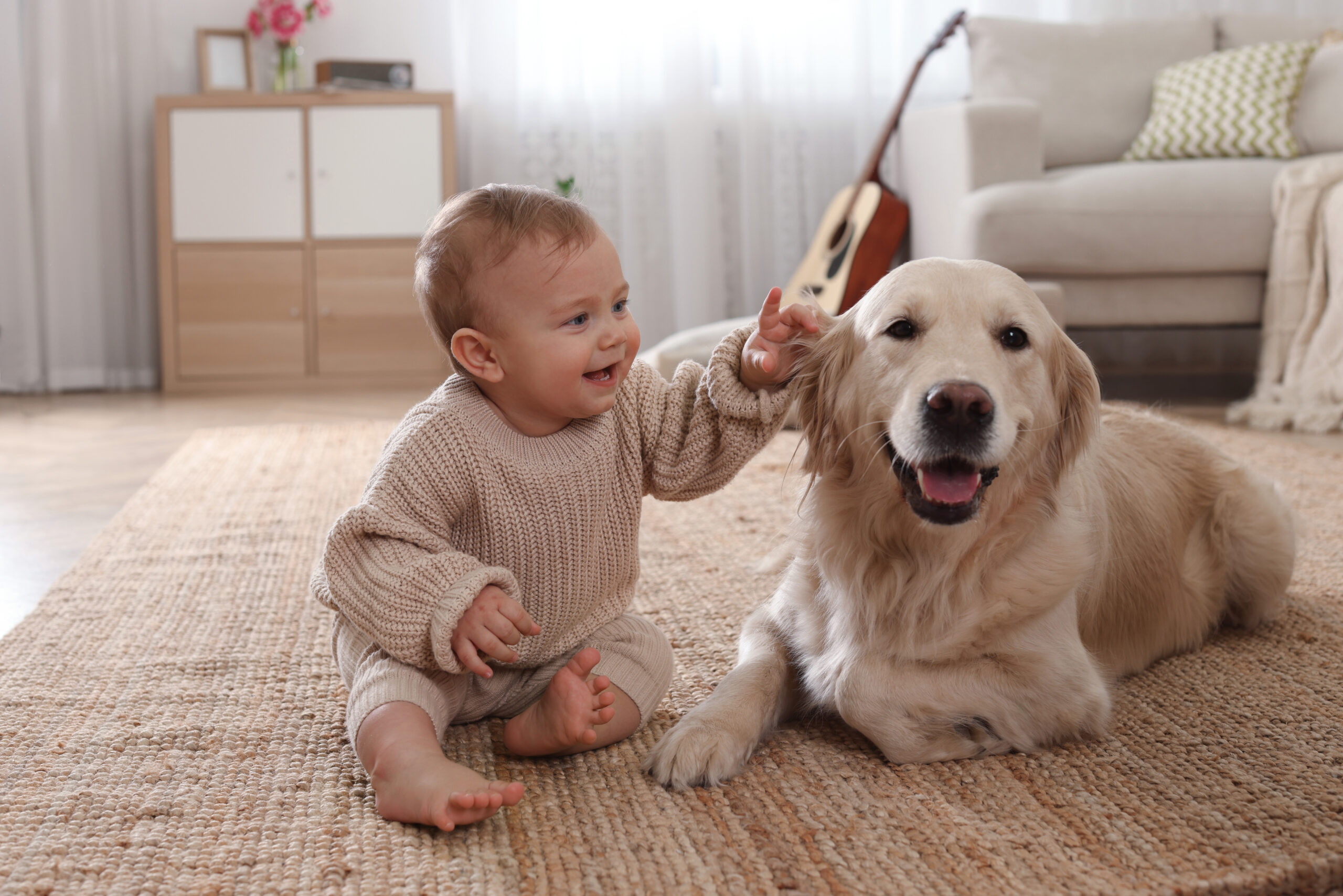
Age also matters—both yours and the dog’s. A high-energy breed may not be best for young kids or older adults who want a more relaxed companion.
If you’re a senior looking for a calmer dog that won’t drag you down the street, consider breeds specifically suited for older owners.
3. Match The Breed To Your Space
Big dogs need big space, not just to move around but to burn off energy. If you live in an apartment, look for breeds that do well in tight quarters and aren’t prone to excessive barking or high exercise demands.

That said, size isn’t everything. Some large breeds, like Greyhounds, are surprisingly low-key indoors, while some small breeds can be bouncy and loud. Always consider both physical size and overall energy level when evaluating space.
4. Understand Grooming & Shedding Needs
Some dogs require regular brushing, professional grooming, and coat maintenance to stay healthy and comfortable. Others are lower maintenance but may shed more consistently. Neither is “better,” but you must know what you’re signing up for.

If you have allergies or prefer a cleaner home, look into low-shedding or hypoallergenic breeds like Poodles or Bichons. Just remember: low-shed doesn’t mean low-maintenance. Often, those coats still need regular care to prevent matting.
5. Know The Exercise Commitment
Every dog needs some form of daily exercise, but the amount varies widely by breed. Golden Retrievers and Labs may need up to two hours of movement daily. A Shih Tzu, on the other hand, may be fine with a couple of short walks and indoor play.
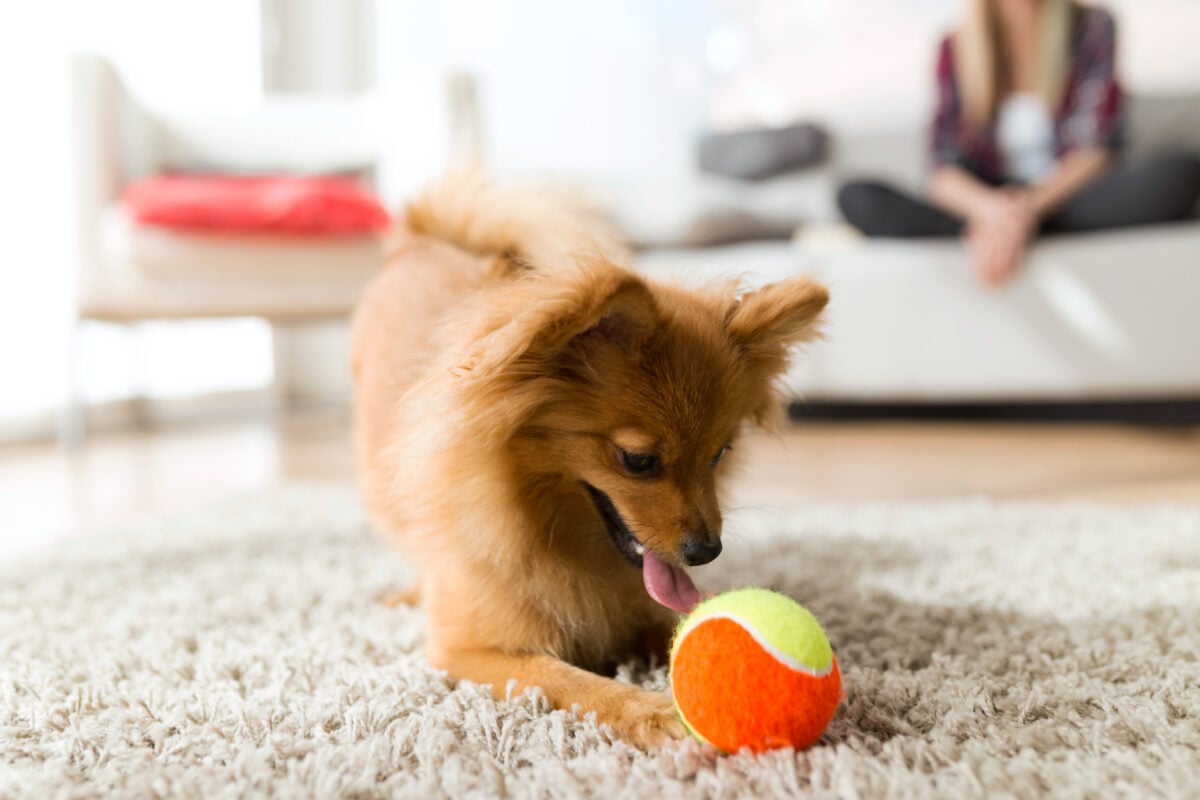
Exercise is about more than just physical health. Dogs need mental stimulation, too. If you’re not up for long walks, make sure to budget time for games, training, and play that keeps your dog mentally sharp and emotionally balanced.
6. Budget For More Than Just Adoption Fees
The cost of owning a dog goes well beyond the initial adoption or breeder fee. You’ll need to budget for vet visits, vaccinations, monthly flea and tick prevention, food, grooming, boarding, pet insurance, training, and toys.
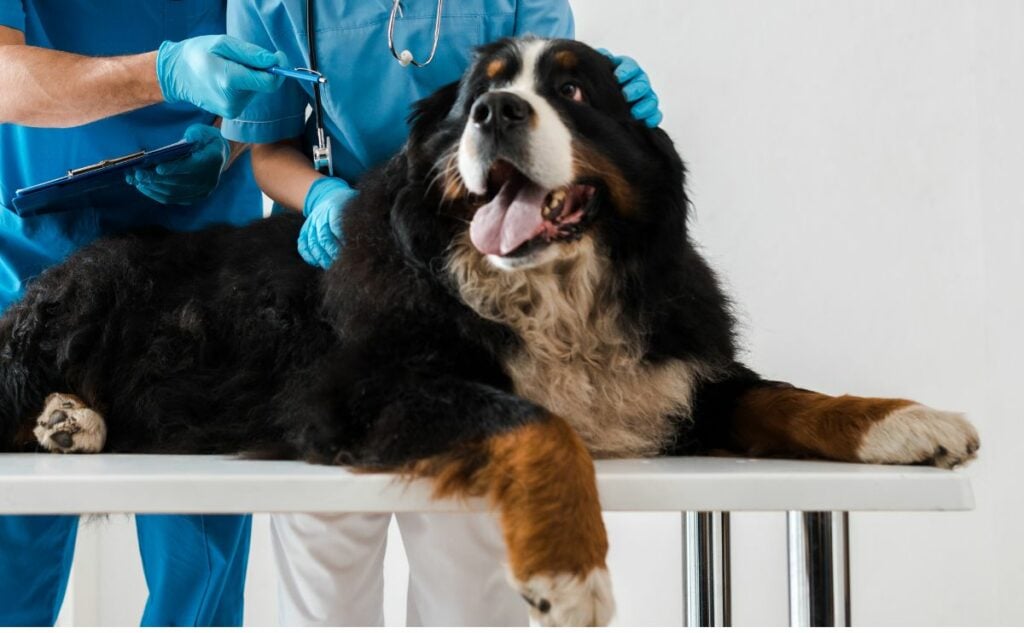
Expect to spend several hundred dollars in the first month and anywhere from $100 to $300+ per month afterward, depending on the dog’s size, health needs, and lifestyle. Emergency costs happen, so setting aside a pet fund early on is smart.
You may also want to consider pet insurance, especially if your dog’s breed is prone to certain health conditions.
7. Decide How & Where You’ll Adopt
There are several ways to bring home a dog: shelters, rescues, or breeders.
Consider looking into breed-specific rescue organizations if you’re set on a specific breed. They often have adult dogs whose personalities are already well understood.
Adopting a puppy from a breeder can give you a clean slate for training, but it comes with more responsibility and unpredictability. Always make sure to purchase a dog from a reputable breeder to avoid health issues for your pup later down the line.
Adult rescues and shelter dogs may already be house-trained and socialized, which is a huge bonus. Take your time, ask questions, and meet the dog before committing.
Breed Comparison Chart: Dogs For First-Time Owners
This chart is a quick reference to help you compare some of the best dogs for first-time owners based on size, energy level, shedding, and family compatibility.
| Breed | Size | Energy Level | Grooming Needs | Apartment-Friendly | Good With Kids |
|---|---|---|---|---|---|
| Golden Retriever | Large | High | Moderate-High | No | Yes |
| Cavalier King Charles | Small | Moderate | Moderate | Yes | Yes |
| Bichon Frise | Small | Moderate | High | Yes | Yes |
| Cockapoo | Small–Med | Moderate | Moderate-High | Yes | Yes |
| Labrador Retriever | Large | High | Low-Moderate | No | Yes |
| Bernedoodle | Large | Moderate-High | Low-Moderate | No | Yes |
| Goldendoodle | Med-Large | Moderate | Moderate-High | Yes (mini size) | Yes |
| Shih Tzu | Small | Low-Moderate | High | Yes | Yes |
| Poodle | Any Size | High | High | Yes (smaller size) | Yes |
| Papillon | Small | Moderate | Moderate | Yes | Yes |
| Yorkshire Terrier | Small | Moderate | Moderate | Yes | Yes (with training) |
| Greyhound | Large | Low | Low | Yes | Yes |
| Basenji | Medium | High | Low | Yes (with space) | Yes (older kids) |
Before You Bring Your Dog Home
Once you’ve chosen a breed, it’s time to stock up and prep your space.
- Get the essentials: crate, bed, leash, food and water bowls, toys, training treats, grooming tools, and cleaning supplies.
- Choose your vet ahead of time and schedule an initial appointment.
- Research high-quality food tailored to your dog’s age and activity level. Puppies, adults, and seniors have very different needs.
- Consider training support. In-person classes, private trainers, or online programs like SpiritDog Training can be great tools.
- Set expectations with your family. Everyone should be on the same page about rules, responsibilities, and routines.
Frequently Asked Questions
Choosing your first dog is a big decision, and having questions before taking the leap is normal. There’s a lot to consider, from training and temperament to breed compatibility and lifestyle fit.
Below, we answer some of the most common questions about finding the best dogs for first-time owners. Don’t see yours? Ask us in the comments!
What Are The Best Dogs For First-Time Owners Who Live In Apartments?
Some of the best dogs for first-time owners in apartments include the Cavalier King Charles Spaniel, Bichon Frise, Shih Tzu, and Miniature Poodle. These breeds tend to be smaller, lower-energy indoors, and less prone to loud barking—all ideal traits for shared walls and limited square footage.
View our top picks for apartment-approved dogs, which includes dogs of all sizes.
What If I Want A Low-Maintenance Dog As A First-Time Owner?
Low-maintenance dogs can be an excellent option for beginners. Breeds like the Greyhound and Papillon are often easier to care for in terms of grooming and exercise.
Just remember that every dog still needs daily attention, basic training, and regular vet care.
Are There Certain Breeds First-Time Owners Should Avoid?
Yes. Some dogs require more time, experience, or confidence than a new owner may be ready for.
High-energy working breeds like Border Collies or Belgian Malinois can be too demanding for first-timers.
Similarly, breeds prone to stubbornness (e.g., Akitas, Afghan Hounds, Siberian Huskies, Terriers) or reactivity (e.g., herding dogs, working dogs) may not be ideal unless paired with professional training support.
Sticking to a list of the best dogs for first-time owners helps reduce overwhelm and increases the chance of a good fit.
Is It Better To Adopt A Puppy Or An Adult Dog If I’m New To This?
There’s no one-size-fits-all answer.
Puppies require more time, consistency, and patience, especially for house training and socialization. Adult dogs, especially from rescues or breed-specific organizations, may already be trained and settled in temperament.
Many of the best dogs for first-time owners can be found as adults in shelters.
Do The Best Dogs For First-Time Owners Get Along With Kids And Other Pets?
Many beginner-friendly breeds are known for being social, gentle, and tolerant.
Golden Retrievers, Labrador Retrievers, Cockapoos, and Bernedoodles are especially good with kids. If you already have other pets, look for breeds that are friendly and not overly territorial.
Proper introductions and early training are essential, no matter the breed.
How Do I Know If A Dog Breed Is Really Beginner-Friendly?
The best dogs for first-time owners usually share a few key traits: they’re easy to train, sociable, relatively healthy, and don’t have extreme grooming or exercise needs. Look for breeds with reputations for being adaptable, eager to please, and tolerant of new experiences.
Still Not Sure? Let Us Help
Choosing your first dog isn’t about finding the “best” breed. It’s about finding the best fit for you. Whether you’re drawn to a playful Doodle, a lap-loving Cavalier, or a low-key Greyhound, the perfect match is out there.
Explore some of our guides, including best family dog breeds, best guard dogs, dog breeds that don’t mind spending the day on the couch, and the most affectionate dog breeds.

